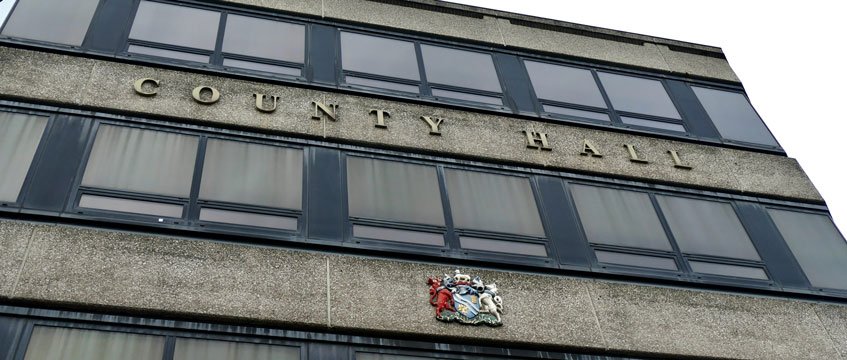Inside the UK’s local authority real estate portfolios
Late last month news broke that ministers were planning to push cash-strapped councils to sell off their assets to help plug budget shortfalls, anticipated to be between £3bn and £4bn over the next two years.
Collectively the UK’s local authorities are estimated to own around £23bn of real estate and, while capital receipts from a mass sell-off of real estate could go some way to plugging funding gaps, the move has been lambasted by many as short sighted and not a solution to the rising numbers of local authorities entering special measures as they deal with years of austerity and unexpected costs.
Here, EG has teamed up with Carter Jonas, an adviser to 150 of the country’s local authorities, to understand more about the public sector estate and exactly what it should do with its assets.
Late last month news broke that ministers were planning to push cash-strapped councils to sell off their assets to help plug budget shortfalls, anticipated to be between £3bn and £4bn over the next two years.
Collectively the UK’s local authorities are estimated to own around £23bn of real estate and, while capital receipts from a mass sell-off of real estate could go some way to plugging funding gaps, the move has been lambasted by many as short sighted and not a solution to the rising numbers of local authorities entering special measures as they deal with years of austerity and unexpected costs.
Here, EG has teamed up with Carter Jonas, an adviser to 150 of the country’s local authorities, to understand more about the public sector estate and exactly what it should do with its assets.
The scale of investment
Carter Jonas analysis shows that local authorities in the UK invested almost £13bn into commercial real estate over the past decade. Councils spent heavily from 2016 to 2019, with £1.6bn invested at the start of that period, rising steadily to a peak of almost £3bn by the end.
Most purchases were undertaken via cheap borrowing from the Public Works Loan Board. That money became more costly in 2019 when the Treasury increased its interest rate by 100bps in response to concerns about the scale of local authority investment. By late 2020 loans ceased to be available to local authorities for investment in income generating commercial property.
This, together with rising uncertainty around occupational demand following the pandemic, meant the total value of purchases fell rapidly from that peak of £3bn to £1.2bn in 2020 and to just £230m last year, says Carter Jonas.
Of the £12.9bn invested in commercial property by local authorities over the past 10 years, some 67% (£8.6bn) has been spent on assets valued at £10m or more, with 42% (£5.4bn) spent on property valued at more than £20m.
There has been huge variation in the degree to which local authorities have invested too, with some highly exposed and others with little or no exposure. The most exposed five local authorities have invested £2.4bn between them over the last 10 years, while some 31 authorities invested more than £100m. More than 100 bought property valued at less than £5m in total.
Investment has been biased towards retail and office properties, with retail the most prominent sector, accounting for £4.7bn (36.5%) of the total. Office represented 33.4% of the total (£4.3bn) with industrial representing one fifth, some £2.6bn. The remaining £1.3bn was spent on a variety of alternative sectors, including healthcare, hotels and leisure, plus development site and other land purchases.
Regen v receipts
Many local authorities have invested in commercial property to fund regeneration, bring life back to their town centres and gain control over assets of importance to their local communities. However, as funding from central government started to fall away, some motivations changed and local authorities started snapping up assets for income generation.
Local authorities were able to make purchases outside of their boundary for income generation, with some £3.7bn being invested in this type of “off-patch” buy over the past decade, according to Carter Jonas analysis. It found that eight local authorities invested more than £100m each in properties outside their jurisdiction. A total of 25 local authorities purchased 100% of their commercial property in locations outside of their jurisdiction.
While there are no definitive figures for the proportion of commercial purchases used for investment versus regeneration, some 46% of the sum invested over the last decade was for property outside of the boundary of the purchasing local authority and therefore almost certainly for income generation. The remaining 54% of purchases by value are within the boundary of the local authority and are likely to be a mix of income and regeneration objectives, says Carter Jonas.
While the lion’s share of local authority real estate purchases may well have been for regenerative purposes, and therefore likely a long-term investment, the current economic environment has seen billions wiped off the value of commercial real estate – a potential problem when central government may force authorities into a fire sale.
Carter Jonas analysis reveals that the average value of retail property purchased by local authorities would have fallen by 29% since it was purchased, with office values down by 23%. Collectively, local authorities have invested some £9bn in retail and offices over the past decade. Today, that investment could be valued at just £6.6bn. Industrial property, on the other hand, would have increased by 23%, taking that £2.6bn investment to £3.2bn.
Alexandra Houghton, head of public sector at Carter Jonas, says: “Rising interest rates has put pressure on yields across all sectors and we have seen a significant shift in prime but especially secondary yields since most of the properties were purchased.
“The vast majority of local authorities have not adopted a free-wheeling, reckless approach to commercial property investment, but the market has moved on and so has the challenge facing local authorities. In some cases those investment assets offer a solution to those challenges, albeit potentially a rather short-medium term one.”
Selling for success
A number of local authorities have already started offloading real estate assets. In November 2023 Somerset council said it was considering selling around £220m of commercial property – at a circa £70m loss – to help balance its finances, with West Berkshire council doing the same with its £62m commercial portfolio (at a £7m loss).
Total sales from local authority real estate reached £370m last year. Land sales accounted for 37% of the total, with many plots sold to developers. Offices were the second largest property type by disposal last year, accounting for just above 30% of all sales. Retail disposals accounted for around 15% of total sales, with industrial representing 10%.
That number is expected to rise in 2024 as pressure mounts from central government to plug funding gaps.
For local authorities that are considering raising for-sale signs across any of the £23bn of commercial real estate it owns, Carter Jonas advises they don’t rush to market.
“Spend some time completing asset management plans to maximise receipts,” says Houghton, “and with the time it takes to run a procurement process to select an adviser, it may be that by the time these assets come to market it coincides with an uptick in demand.”
Image © Geoffrey Swaine/Shutterstock











